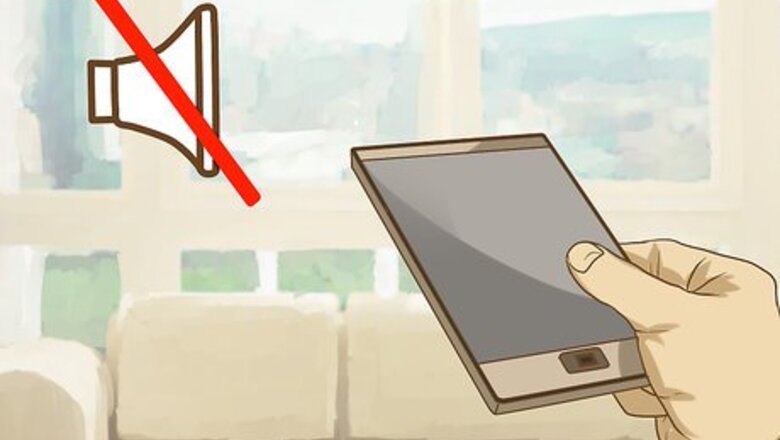
views
Preparing for Bedtime

Block out outside noises from the room. Eliminate noises from telephones, computers, cell phones, and other electronic devices during the period setting your kids up to go to sleep by telling people not to call after a certain time or silencing/unplugging your phone. Avoid using electronic devices unless you are behind closed doors or far enough away that the child can't hear you.
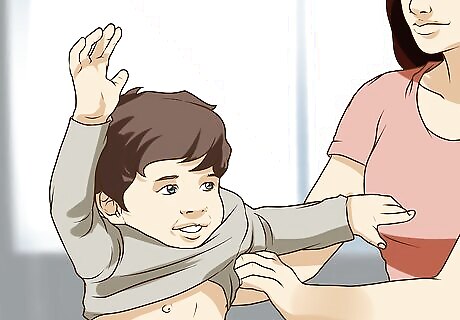
Get the child into their nightclothes. Besides making them feel more comfortable at night, this can help signal to the child that bedtime is coming up. If you start putting on their preferred sleepwear, the child will learn to recognize that this part of the routine means it's time to relax and prepare for bed. Plan ahead. If you have several children that need dressing assistance, you'll need to allow yourself enough time to get everyone ready for bed. If the child still needs to wear a diaper, change it now, rather than disrupting their routine later.
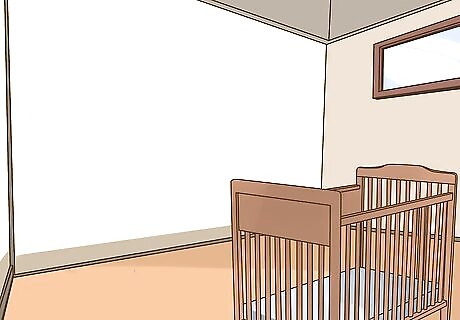
Get the sleeping area ready. Make the room as mildly temperate as possible, whether that involves cooling it down or heating it up. If needed, you can add or subtract additional layers of clothes on the child, but adjust other room factors such as heaters and fans.

Help your child unwind in their room. Read books or sing them some calming songs; this will help set the mood into "nighttime mode."
Figure out which of Supernanny's two techniques might be best for your child. Although both styles have their advantages, there's also an age factor that plays a part. The Sleep Separation Technique is meant for children younger than three years old, and the Stay in Bed Technique is usually aimed at older children. Aim your methods towards getting the youngest children off first, before getting the others to sleep. At first, the Stay In Bed technique can take a little bit of time to master, but with practice, the child will learn, and you can then move on to the older children with help from your significant other - or here you can split up the duties if you have someone else around at bedtime.
Following One of Supernanny's Techniques

Keep calm and stay in the bedroom. Encourage the child to fall asleep in their room. Give them kisses and hugs (cuddles, as Supernanny calls them).
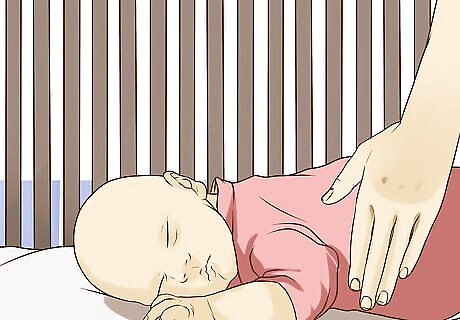
Place the child into their crib. This technique is often used when the child sleeps in a crib and hasn't yet moved into a toddler or full-size bed.
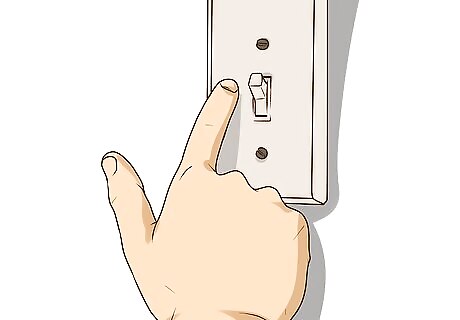
Turn out the lights in nearby rooms (such as hallways leading to the child's room). Try to remain quiet and move minimally to avoid disrupting your child's rest.

Sit down next to the crib but keep within your child's eyesight. If you need to, you may end up sitting on the floor with your legs crossed Indian-style. Ensure that the child can see the side of your face, but refuse to give any direct eye contact to the child. It may be hard, but this is essential to the method. If you need to, use small strips of reflective tape to mark the place you are sitting to return. (You may even need to do this before turning out the lights.) Increase the distance between you and the child each night you use this technique. Ensure that you creep closer and closer to the door, as long as the child still feels secure in their crib.
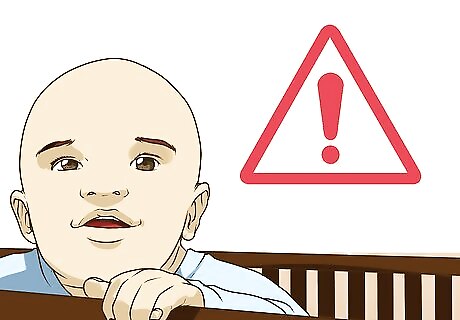
Resist the urge to get up and make physical contact with your child unless they actually get out of their crib. Make no communication with the child. This may be hard when they call for you but remain consistent and firm in your approach.
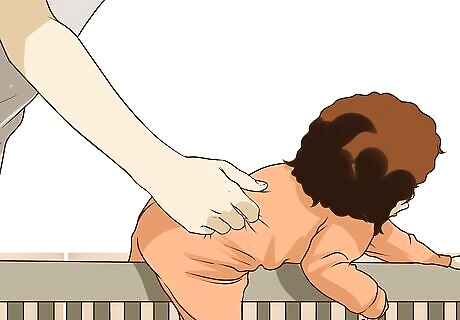
Return the child to their crib if the child tries to escape. Avoid eye contact. Look away from the child as you pick them up and place them back in their crib.
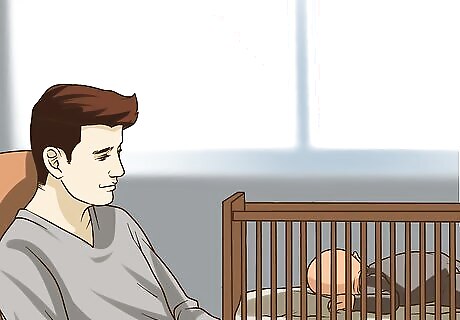
Return yourself to the same spot on the floor. Act as if you never left the spot; sit so that the child can still see the side of your face from the same spot.

Let the child cry until they tire themselves out and cry themselves off to sleep. It'll be upsetting to hear them cry, but recognize that the child will be okay and isn't in pain; they need to learn the new routine.
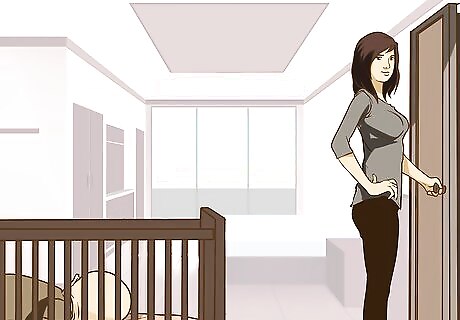
Get up and walk out of the room once you can be assured that they have actually fallen asleep.
Handle subsequent nights. Each night following, move closer and closer to the door. Once you are outside the door, spend that night sitting there if practically possible. After being outside the door, you can actively go about a normal routine.

Take the child into their bedroom as usual. Talk to the child in a calm voice, say that it's nighttime and place them into bed. Tell the child that you'd like them to calm down and relax.
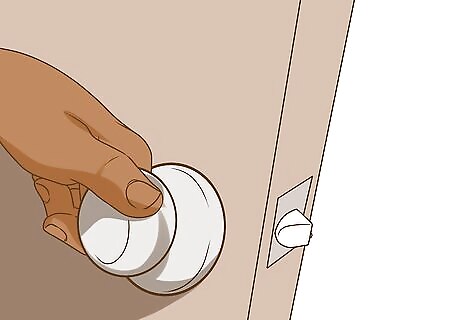
Leave the room. Whether you head back to your bedroom or stand just out of sight distance, they should not be able to see you. Wait for them to stir and get out of bed.
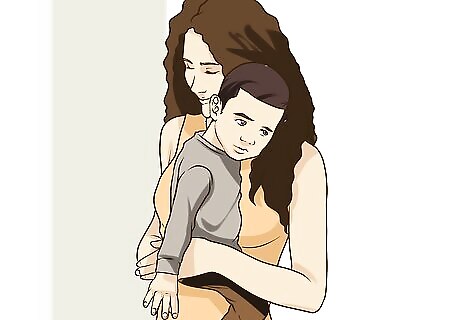
Give them a hug and a cuddle as you pick them up and transport them back into their room the first time. Remind the child that it is nighttime in soft, mellow words as you walk them back into their room before placing them back down into their bed. You might say, "It's nighttime/bedtime darling," for example. Try not to feed into their activity. By this time, if they can walk, have them walk into bed from wherever they are. If they can't quite walk (or refuse to), carry them back into bed either in the shoulder hold or cradle hold (letting their legs dangle free).

Leave the room, much like you did before.

Wait for the second trip out of bed (if it happens).

Tell the child that it's nighttime, take them, bring them back into their room, and place them back into their bed. Make this interaction very brief, including a brief kiss and cuddle if needed. Use the Supernanny-approved "Bedtime, darling" response.

Leave the room and wait for the child to come out if they do.

Bring the child back into their bed without saying anything. This is an easy step to forget, but it's important not to say anything after a third attempt.

Repeat this "third trip" out of bed routine until the child are convinced that they won't get a reaction from you. They will begin to realize that bedtime means "sleep." Don't kiss or cuddle them on these subsequent trips back to bed. Follow through with whether or not you'll be able to carry them.
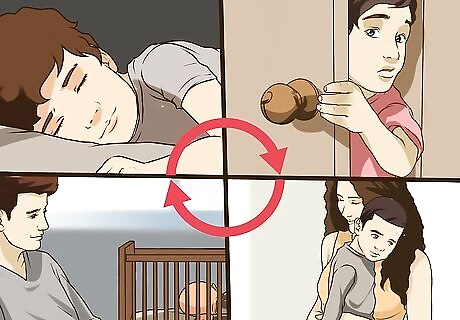
Stay consistent in the route and technique in subsequent nights that the child gets out of bed.




















Comments
0 comment